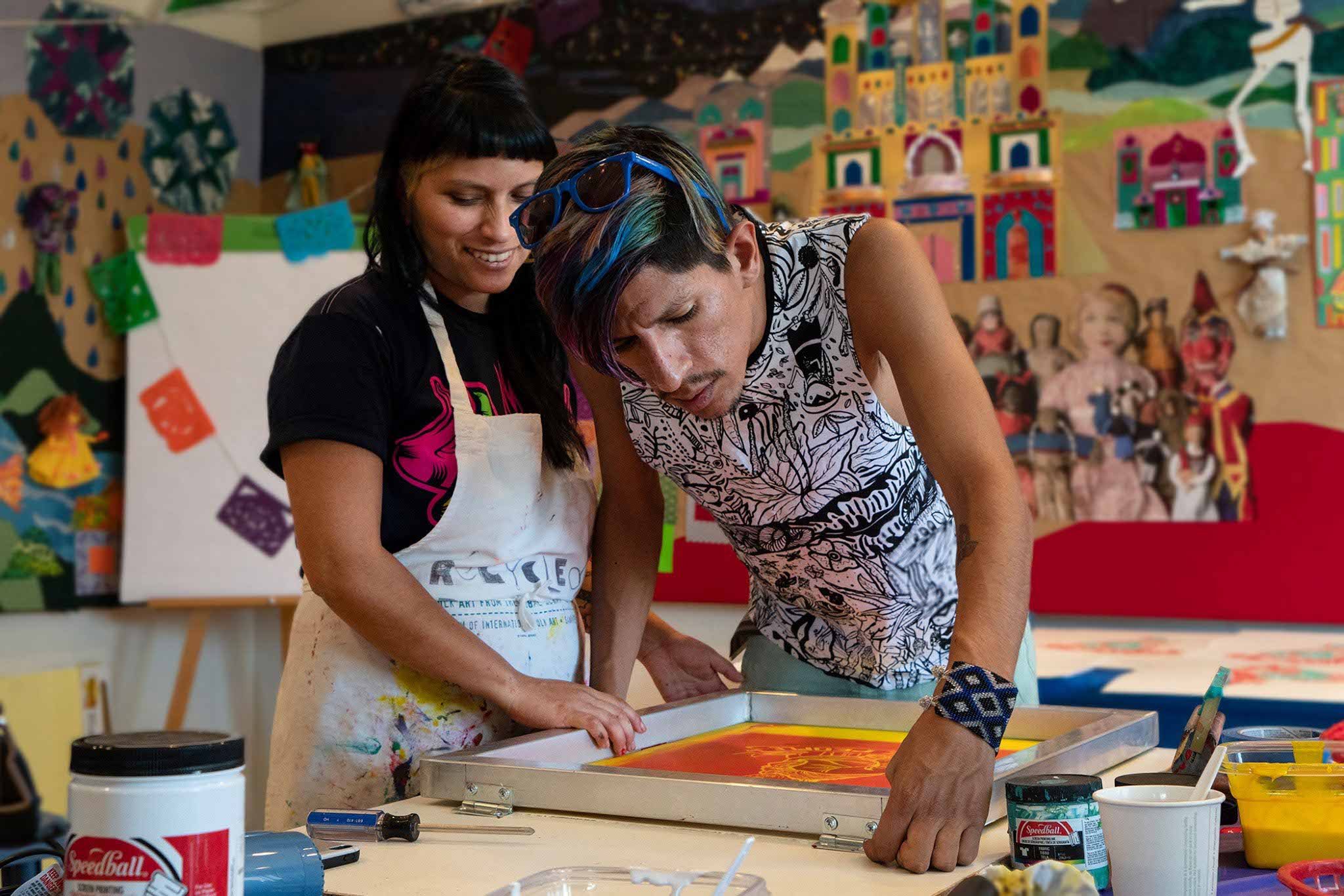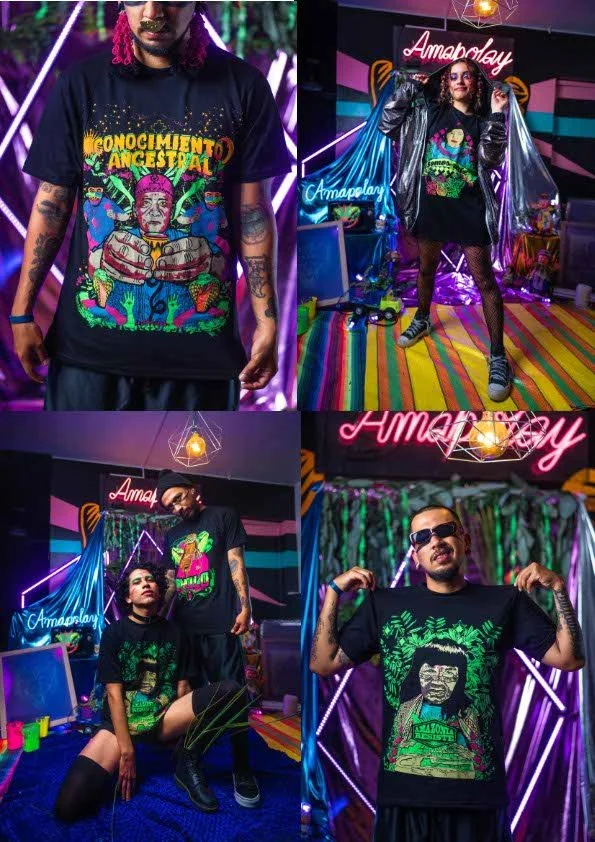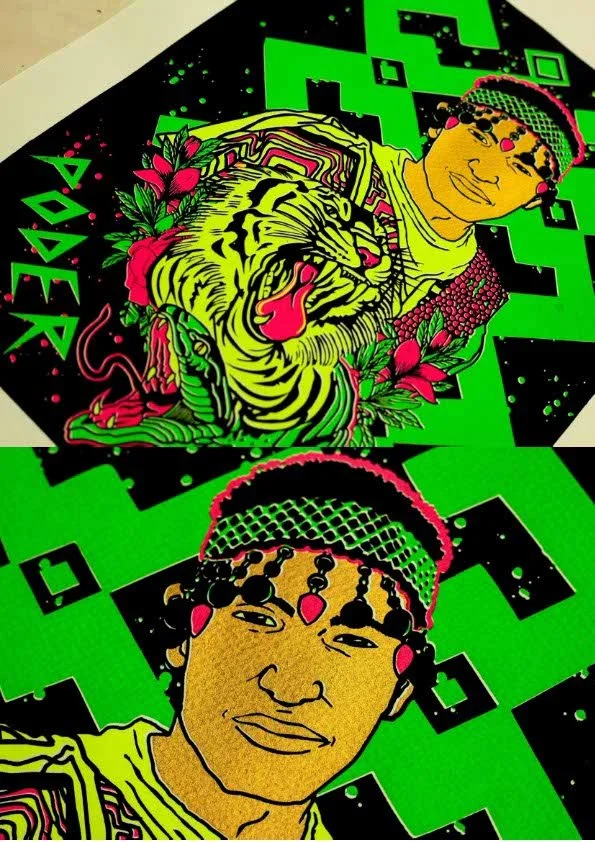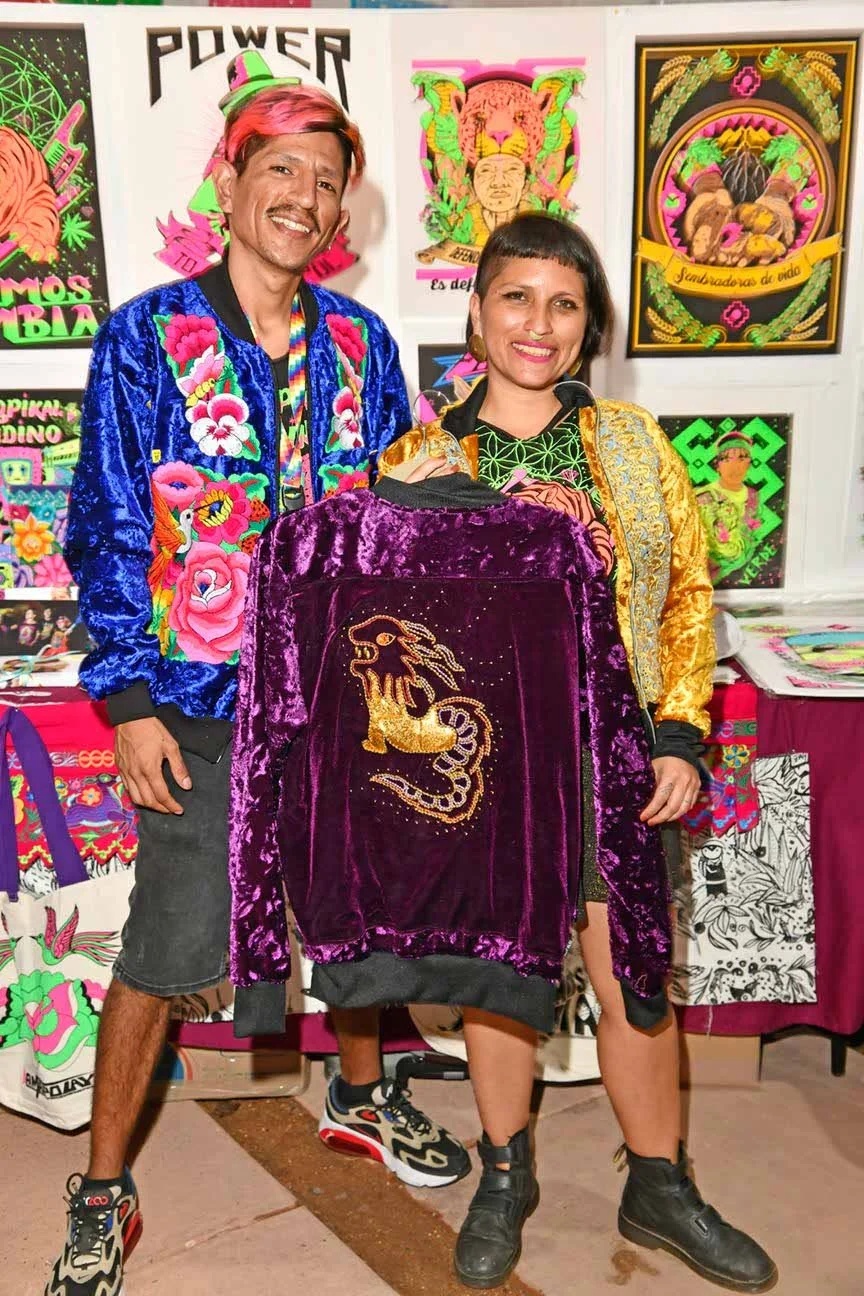Amapolay
A New Urban Folk Culture Takes Root in Lima
Upon first glance, the brightly colored, graphic designs of Amapolay look purely contemporary. Nevertheless, this Lima, Peru-based collective uses screen-printing—a technique with ancient origins—along with deeply traditional motifs and references rendered in eye-catching color and scale to raise awareness about Lima’s now-urban Indigenous populations.
Lima’s vibrant gráfica popular tradition comes from working class immigrant neighborhoods and shantytowns in the capital city. Waves of migrants from the Andean highlands brought with them unique painting styles as well as a palette of bright colors and striking motifs. By the 1960s, this blend of tribal styles, mixed with urban aesthetics, produced a culture and style known as chicha. Today, this urban folkloric style is applied by AMAPOLAY to address political and community issues. Products include prints and apparel, all using Peruvian cotton, prized the world over for its softness and durability. Through workshops, street fairs, and live demonstrations, Amapolay’s artisans engender pride among Indigenous youth and promote a unique culture that mixes rural heritage with urban life.
Amapolay founders Carol Fernández Tinoco and Fernando Ernesto Castro Chávez were studying anthropology at San Marcos University when they realized the importance of having a space where it might be possible to share the rapidly evolving popular culture of Peru’s capital. Their families migrated to Lima from Indigenous areas generations before and experienced pressure to emulate Lima’s European criollo culture, which sometimes sees Indigenous identity as a social and economic liability. “Our work uses a traditional color palette and methods, but we have expanded our themes,” says Fernando. “We use our folk art tradition to raise awareness of issues affecting our communities.”







